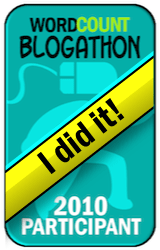Would YOU eagerly read an article with the following title?
Gulf Oil Spill
Impact on State and Local Government
Analysis of original title and introductory paragraph
Thousands of articles about BP's oil spill are fighting for your attention. "Not another oil spill story!" is probably the reaction of many readers who scan this title. The big problem: The title doesn't say why you should read it.
Let's look at the first paragraph to find a reason that you can highlight in a new title.
The Gulf Oil Spill will certainly have long-term repercussions for the fishing and tourism industries as well as the overall environment in the impact areas of the Gulf region. It is early in the disaster to fully evaluate the long-term effect on the states most at risk of contamination: Louisiana, Mississippi, Florida and Alabama. We do not anticipate immediate negative credit implications at the state level for those in question, but feel concerns are more likely to materialize at the local level at this time. We are continuously monitoring developments in the Gulf and considering our credit exposure in these areas.
Aha! Now I get it. Look at the phrases above that I bolded. Readers of this wealth management firm's newsletter should realize that the firm is looking out for the safety of their municipal bond portfolios. Too bad the title didn't tell them that.
The introductory paragraph doesn't help either. It starts with generic information that doesn't relate directly to investments. Even worse, it buries the most important information in the paragraph's second half.
Also, if readers aren't fixed income geeks, they may not realize that "negative credit implications" translates into "possible bond downgrades that could trim the value of your municipal bond portfolio."
Please stop here. Before you read any more, jot down a new title and first sentence for this article.

Looking for a better title
Here are some alternative titles.
- Will Your Municipal Bond Portfolio Spill Like BP's Well?
- No Need to Worry...Yet About the Oil Spill's Impact on Your Bond Portfolio
- Assessing the Oil Spill's Impact on Muni Bonds: The Three Most Important Factors
Which do you like best? Feel free to share your title ideas.
Related posts
____________________
Receive a free 32-page e-book with client communications tips when you
sign up for my free monthly newsletter.
Copyright 2010 by Susan B. Weiner All rights reserved
















